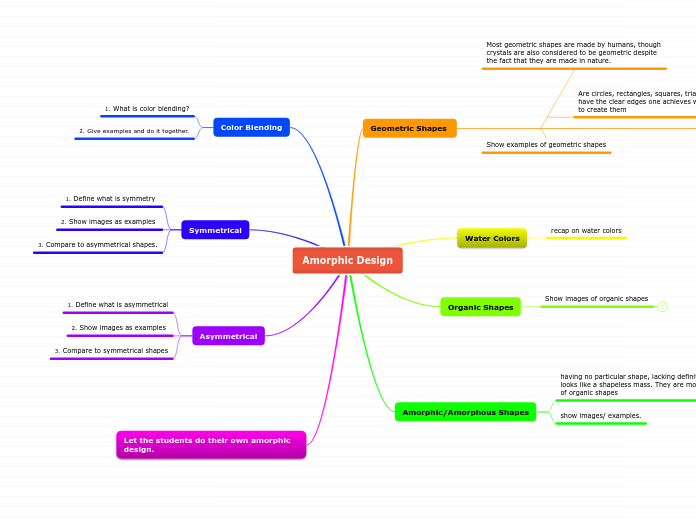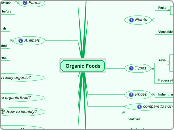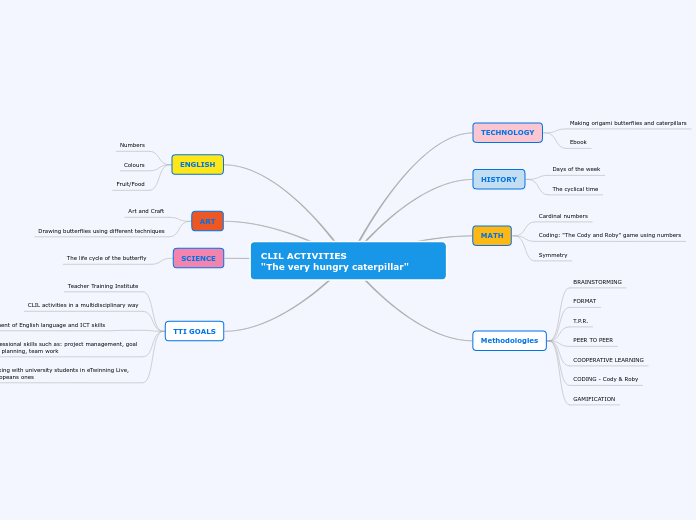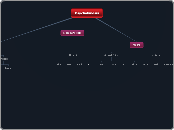Amorphic Design
Type in the name of your subject.
Let the students do their own amorphic design.
Asymmetrical
Add detailed notes about each lecture, so that when the time comes to prepare for exams, you will have an easier and quicker overview.
Compare to symmetrical shapes
Define what is asymmetrical
Symmetrical
Add here all the details about your projects.
Compare to asymmetrical shapes.
Show images as examples
Define what is symmetry
Color Blending
Schedule your course ahead. Knowing all the information will make everything easier.
Give examples and do it together.
What is color blending?
Add the class information for each week.
Amorphic/Amorphous Shapes
Add key information about the books you've read. If you feel it's necessary, you can add a small summary of your readings in the Notes section.
show images/ examples.
having no particular shape, lacking definite form looks like a shapeless mass. They are mostly made of organic shapes
Organic Shapes
Review your resource requirements and tick off the devices you will need as well as their availability. Add others, if necessary.
Show images of organic shapes
Select as needed:
Organic shapes are associated with things from the natural world, like plants and animals.
Organic shapes and forms are typically irregular or asymmetrical.
Shapes with a natural look and a flowing and curving appearance.
Add other resources:
Water Colors
recap on water colors
Geometric Shapes
Type in all the info you would like to know about this subject. If there is something you don't know yet, no problem! You can fill in the blanks along the way.
Show examples of geometric shapes
Add details about your teachers' evaluation criteria. This way you will know the aspects you need to focus on.
Most geometric shapes are made by humans, though crystals are also considered to be geometric despite the fact that they are made in nature.
Write down the attendance policy, to avoid confusion throughout the year.
Are circles, rectangles, squares, triangles and so on - have the clear edges one achieves when using tools to create them









